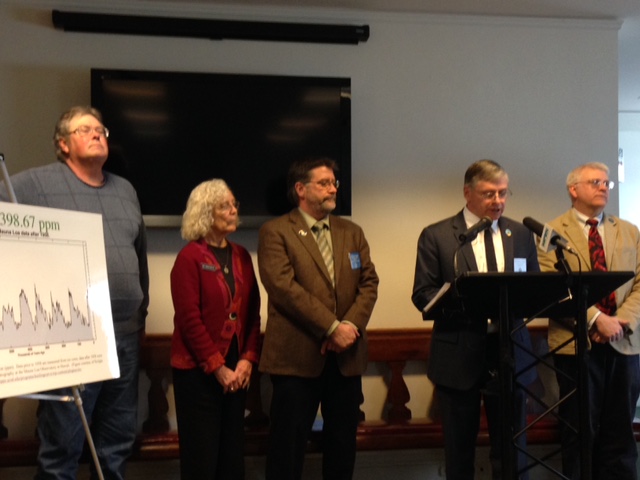
The Ocean Acidification Commission on Thursday presents its report to the public and unveils four bills for the legislative session. (from left to right: Richard Nelson of Friendship, Rep. Joan Welsh, D-Rockport, Rep. Wayne Parry, R-Arundel, Sen. Chris Johnson, D-Somerville, and Rep. Mick Devin, D-Newcastle)
Ocean acidification panel calls for action to address threat
Legislative members to unveil four proposals to protect marine ecosystem, coastal economy
AUGUSTA – The Commission to Study the Effects of Coastal and Ocean Acidification on Commercially Harvested and Grown Species on Thursday presented its report to the public and unveiled four proposals for the current legislative session that are informed by the panel’s work.
“Maine is taking the lead on ocean acidification on the Eastern seaboard. We understand just how dangerous it is to our marine environment, jobs and way of life,” said Rep. Mick Devin, D-Newcastle, co-chair of the panel and sponsor of the legislation that created it. “It isn’t just valuable shellfisheries that are at risk, but other parts of our economy like tourism. No one visits the Maine coast looking for a chicken sandwich. Let’s make sure visitors can have a lobster roll, a bowl of clam chowder, a bucket of steamers or a platter of Damariscotta River oysters on the half shell when they come to Maine.”

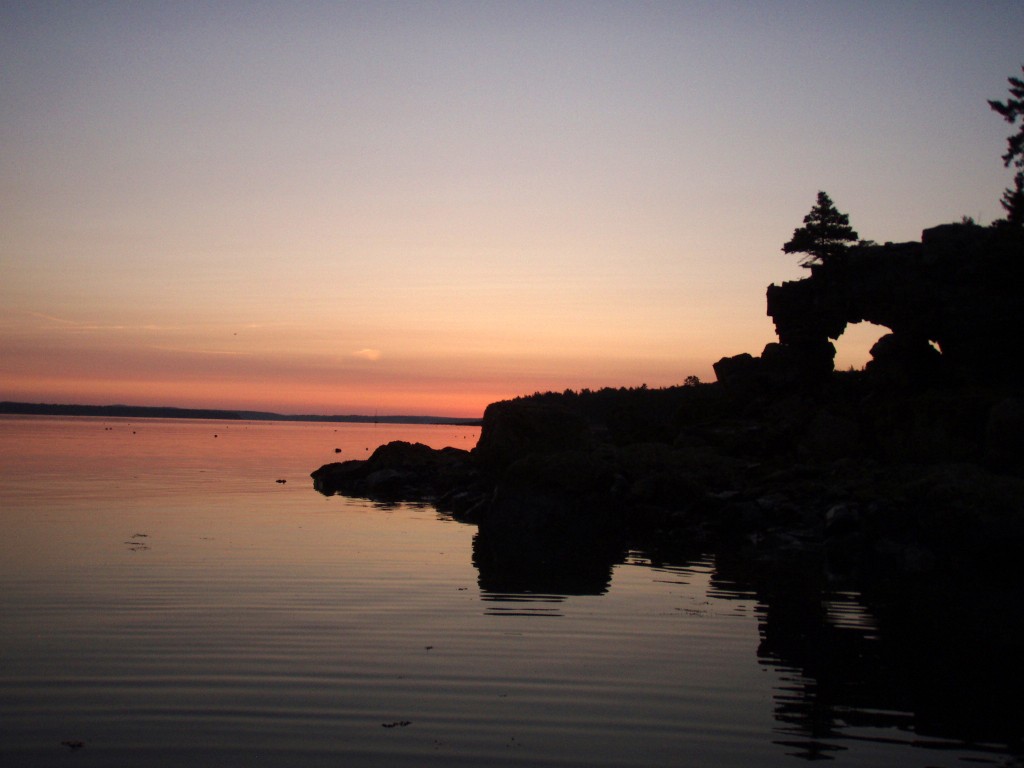
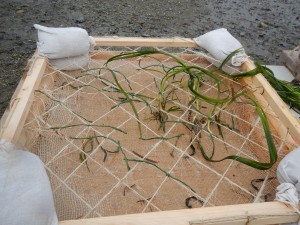
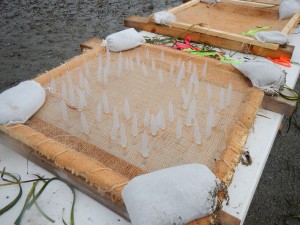
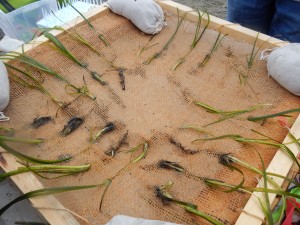
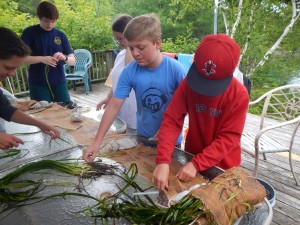
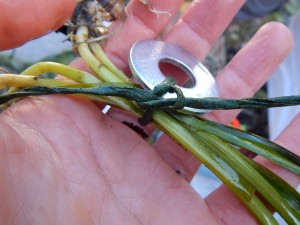
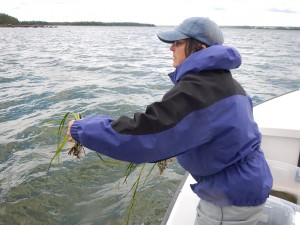
 Abstract: In 2013, there was a devastating loss of eelgrass (Zoestra marina) in upper Frenchman Bay, Mount Desert Island, Maine. This study examined the relationship between the most recent invasion of novel haplotypes of the European Green Crab (Carnicus maneas) and the decline of eelgrass in upper Frenchman Bay. While C. maneas is an invasive species that has been present in the Gulf of Maine for over 100 years, a second invasion of C. maneas in Nova Scotia occurred during the 1980s and 1990s, bringing novel haplotypes of the species that have been cited to be more cold tolerant and voracious as compared to other haplotypes. The presence of these new haplotypes has been hypothesized to be a contributing factor to habitat destruction along the Maine coast. In 2013, northern haplotypes of green crab were documented in upper Frenchman Bay where the eelgrass had disappeared. In order to assess this relationship, the cytochrome oxidase I (COI) haplotype of the crabs at sites around Mount Desert Island was determined as well as the abundance of the eelgrass at corresponding study sites. The study did not find a significant correlation between the presence of northern green crab haplotypes and eelgrass abundance at the study sites. This indicates that the status of eelgrass health is not dependent on the genetic composition of green crabs that are present. It is more likely that factors such as green crab abundance or water quality are contributing to the declining health of eelgrass beds along the Maine coast.
Abstract: In 2013, there was a devastating loss of eelgrass (Zoestra marina) in upper Frenchman Bay, Mount Desert Island, Maine. This study examined the relationship between the most recent invasion of novel haplotypes of the European Green Crab (Carnicus maneas) and the decline of eelgrass in upper Frenchman Bay. While C. maneas is an invasive species that has been present in the Gulf of Maine for over 100 years, a second invasion of C. maneas in Nova Scotia occurred during the 1980s and 1990s, bringing novel haplotypes of the species that have been cited to be more cold tolerant and voracious as compared to other haplotypes. The presence of these new haplotypes has been hypothesized to be a contributing factor to habitat destruction along the Maine coast. In 2013, northern haplotypes of green crab were documented in upper Frenchman Bay where the eelgrass had disappeared. In order to assess this relationship, the cytochrome oxidase I (COI) haplotype of the crabs at sites around Mount Desert Island was determined as well as the abundance of the eelgrass at corresponding study sites. The study did not find a significant correlation between the presence of northern green crab haplotypes and eelgrass abundance at the study sites. This indicates that the status of eelgrass health is not dependent on the genetic composition of green crabs that are present. It is more likely that factors such as green crab abundance or water quality are contributing to the declining health of eelgrass beds along the Maine coast.